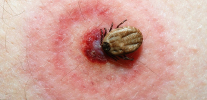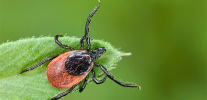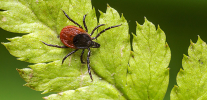
Taiga tick is one of the brightest and most famous representatives of the family of ixodid ticks. Possessing an extensive distribution area and a high degree of ecological plasticity, this species could take one of the leading places in the northern ecosystems of our country.
The taiga mite is spread over the territory stretching from the Pacific Ocean to the European part of the former USSR. The area stretched from Kamchatka and the Kuril Islands, through the entire southern part of the Siberian taiga all the way to the Leningrad Region. In Asia, the species is found in the southern regions, settled throughout Altai, then the range is interrupted, and the tick is found already in the forests of the Tien Shan.
The main habitat of the parasite is taiga (its various variants) - hence the name of the species. However, such a vast area of distribution covers other natural areas: the species lives inbroad-leaved coniferous and broad-leaved forests, sometimes ticks are also found on the territory of forest-steppe. The main limiting factor in the distribution of the species is humidity, whose indicators towards the south gradually decrease.

The increased interest of scientists to this species is due to the fact that the taiga tick is a carrier of the causative agents of a number of dangerous human and animal diseases. In the first place is tick-borne encephalitis, an acute viral infectious disease that affects the nervous system.
Moreover, the taiga tick not only mechanically transfers the causative agent of encephalitis, but also keeps the virus inside its body for a long time, thereby maintaining its viability. Therefore, contact with the taiga tick is always dangerous for humans.
Taiga tick and other ixodic ticks
Before starting to consider the interesting features of the biology of the taiga tick, it is useful to have an idea of its systematic position (take into account the systematics). In simple words, this is the position of the species in the system of the entire living world.
It is interesting
In the Linnea binary nomenclature, each species name consists of two words: 1 — the name of the genus-group of species;and the second - directly specific. Clans are reduced to families, families in groups or orders, they, in turn, into classes, etc. Knowing the general characteristics of a taxon (class, family, order), it is possible to determine which of them belongs to one or another species. Accordingly, researchers do not need to memorize the description of each species in particular, it is enough to know the general characteristics, which greatly simplifies the task of studying.
The Latin name of the taiga tick is Ixodes persulcatus (popularly called forest or European). The species was described in 1930 by a German acarologist (tick specialist) Schulze. A copy was found by a researcher in the Far East, in the Amur Valley.
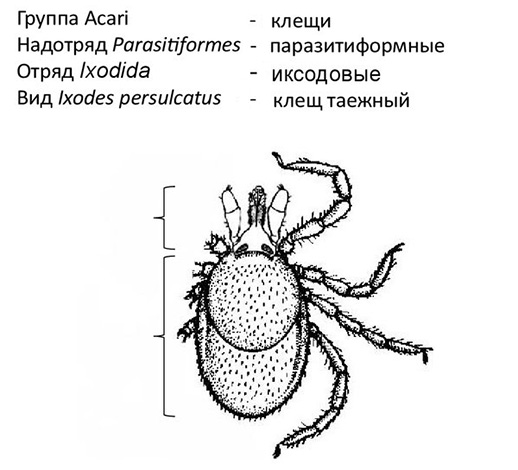
The active study of this species began from the moment when its leading role in the transmission of tick-borne encephalitis pathogens was clarified. Then the data on the biology and distribution of the taiga tick were used by an eminent parasitologist, academician E.N. Pavlovsky to substantiate his theory of the natural focal nature of the transmissible (transmitted to the final host through the vector) human diseases. Already in the 80s of the 20th century, more than 3,000 publications were known regarding aspects of the taiga tick's vital activity.
Ixodes persulcatus belongs to the family of Ixodes ticks (Ixodidae), whose representatives are temporary exoparasites of humans and animals. The family is a member of the Ixodide order, a subclass of parasitiforns ticks (Parasitiformes) of the Spider type.
The genus Ixodes is represented in the world fauna by more than 200 species, with about 20 species found on the territory of the countries of the former USSR. The genus includes several closely related species, which many researchers confused with the taiga tick: I. pavlovskiy, I. kashmiricus, I. nipponensis, I. kazakstani. It should be noted that this circumstance could not but affect the data on the distribution and abundance of the species.
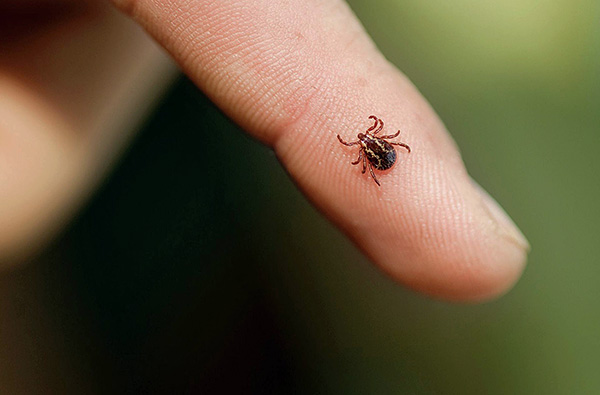
This moment is quite important and requires special attention, since not all similar species can tolerate encephalitis, and their distribution can be local. In order to distinguish the taiga tick from any other Ixodes, you need to know the features of its structure (morphology). About this we will continue to talk.
External structure of the taiga tick and adaptation to parasitism
Taiga tick is an Arthropod type, therefore it has a typical structure for all arthropods. However, the main distinguishing feature of all representatives of arachnids (including ticks) is that their body is not divided into many segments.

On a note
All arthropods initially had a metameric structure, that is, their body consisted of a large number of identical segments that were carried over a pair of limbs. In the process of evolution, the number of segments decreased, departments were allocated, where the segments performed other functions and, accordingly, differed in structure. In arachnids, in particular ticks, many segments have grown together, and the body has lost its primary form. This is important from the point of view of biology, since the many segments covered with hard shell would reduce the stretchability of the integument, and Ixodes mites could not absorb the required amount of food.
The body of the taiga tick consists of two parts: the gnathosome (the front part of the body represented by the mouth apparatus) and the idiosomes (the rest of the body). With the help of an oral apparatus with a proboscis, the mite attaches to the host and feeds. In general, the gnathosome is rather complicated.
Simply speaking, the tick has the form of an elastic bag, the shape of which can be from ellipsoid to round. In appearance, a well-fed and hungry tick differ significantly:

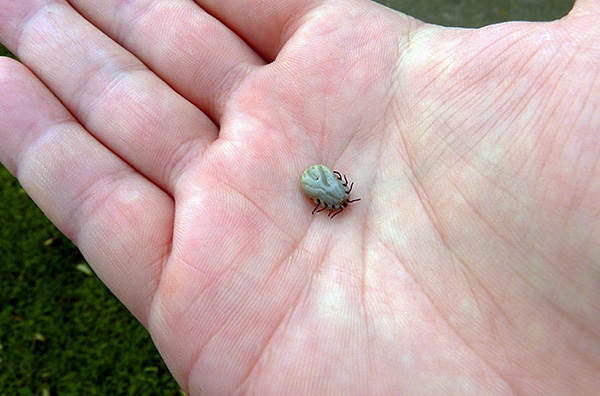
The body of a hungry tick is flattened in the dorso-abdominal direction, which increases its maneuverability among leaf litter or host hair.From above, Ixodes persulcatus is covered with dense chitinous covers, which, despite the elasticity, well protect the arthropod from enemies.
On a note
The body of ixodid ticks is really quite elastic, which is extremely necessary for their nutrition. However, it is almost impossible to crush a tick with your hands if it has not stuck to the body. If the bite is still carried out, then crushing the bitten tick is strictly prohibited.
The size of hungry individuals may exceed 10 mm, and those who drank blood - 20 mm. The integuments also differ in color, depending on when the parasite was feeding. For example, a hungry female has a brown color, she has a brilliant reddish shield. When bloodsucking body brightens and becomes grayish.
On a note
The color of the covers is quite variable, and depends not only on the degree of saturation, but also on the natural environment and the substrate where the tick lived. Therefore, you should not try to determine the type of ticks solely by color, since this feature varies widely.
The oral apparatus of the tick (gnatosome) is located at the front end of the body, is forward and is flush with the dorsal part.It is movably jointed with the body, which provides better attachment and maneuverability. With the help of the mouth apparatus, the tick is attached to the host and sucks blood.

Gnatosome consists of several functional departments, which include the proboscis, piercing stilettos (modified chelicera), and the palpi, the pedipalps, which perform a tactile function.
At the base of the proboscis is a capsule, where the piercing parts of the mouth apparatus are enclosed. On the sides of the base are attached four-setae palpi that perform a tactile function. From the ventral side there is an outgrowth, the so-called hypostom. It has the appearance of an elongated roller with a whisk of hooks.
Chelicera are located above the hypostom and are enclosed in special cases. With a bite, they cut the host integument like knives. Then it is introduced by a hypostoom, the hooks of which are securely fixed in the tissues of the victim.
The photos below show the structure of the taiga tick oral apparatus:

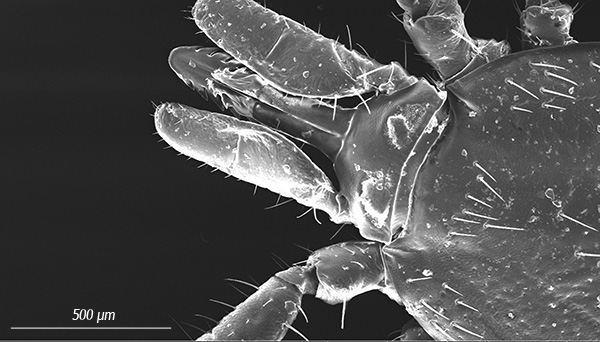

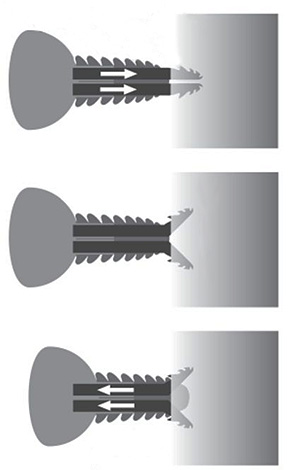
On a note
When a bite is injected into the wound, anesthetic substances are injected, so you will not feel how the tick has adhered to you. In addition to this, saliva of the taiga tick contains anticoagulants that prevent blood from clotting.So that the tick could normally feed on not thickened blood, a lot of saliva from the parasite is excreted. For a person, this is dangerous not by blood loss, but by the fact that, along with saliva, pathogens that are carried by the taiga tick enter the body.
The body of the parasite is covered with dense chitinous shields. Inseparable hard patches — shields — are found on all ticks.
The dorsal shield of the male is solid, covers the entire body. In the larva, nymph and female, it is short, covering only the anterior part of the dorsal (dorsal) surface. Abdominal plates are only in males, and they occupy almost the entire abdominal surface of the body.
The photo below shows the male, female and nymph of the taiga tick:
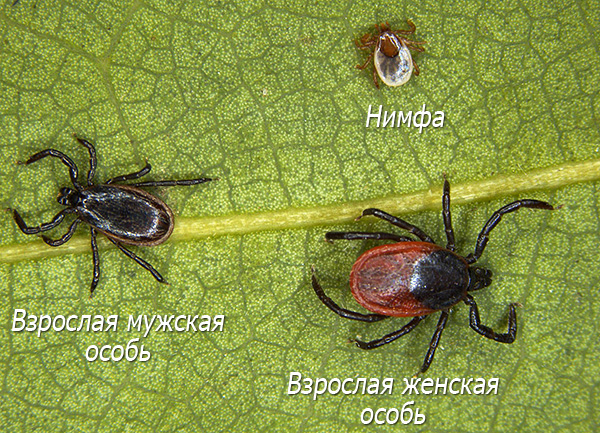
On the ventral side, 4 pairs of legs with articular structure are attached to the body. Identification of ticks with insects is found in many unspecialized resources, which is a gross mistake: insects always have 6 walking legs and ticks have 8 walking legs.
The eye of the taiga tick is not. The search for prey is carried out with the help of palpi on the oral apparatus, bristles located throughout the body (trichobothria) and special organs of chemical feeling located on the legs.And the tick, without vision, relying on its chemo, thermo and mechanoreceptors, copes with the problem of finding prey.
On a note
It would be very difficult for a non-expert to distinguish a taiga tick from other blood-sucking ticks, since for this it would be necessary to know all the details of the structure of the parasite. Therefore, it is better for the average person to pay attention to the natural zone in which the meeting with the tick occurred and whether it corresponds to the habitat of the parasite. If so, then in such a situation it is best to place the body of the tick in a 70% alcohol solution and consult a specialist.
Life cycle
The life cycle of the taiga tick is based on the principle common to all Ixodes ticks (see tick breeding). Ontogenesis lasts 3 years. During this period, Ixodes persulcatus goes through 4 stages of development: egg, larva, nymph and adult (imago). The transition between these stages is molting.
Nutrition is very important for the full development of ticks. For the development of eggs, the female must be fully fed. Only individuals that do not need food also molt.
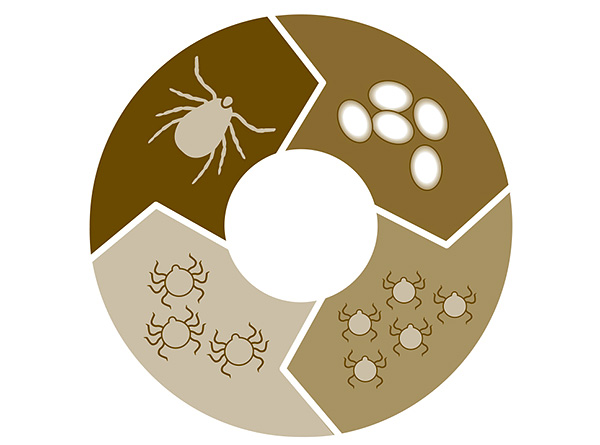
For taiga ticks, a change of owners is also characteristic. Larvae and nymphs feed on small rodents and birds living on the ground. Adults (imago) prefer large mammals, in particular, humans.
Nutrition Features of the Taiga Mite
Nutrition is a determining factor in the development and state of the taiga tick population. The parasite traps its prey in typical habitats for itself, except in cases where the eggs were immediately laid on the host and the larvae do not need to look for a prey.
It is important to note that the tick is not engaged in an active search for the host, but takes a wait-and-see attitude.

It is important to know
Ixodes never fall on humans from trees and shrubs. Taiga tick - the inhabitant of exclusively grassy tier. The animal is attached to the end of a blade of grass, pulling the first pair of limbs forward. First, it allows you to quickly attach to the wool or clothing of the future owner. Secondly, the organs of chemical sense, located on the first pair of limbs, make it possible to accurately determine the approach and direction of motion of the victim.
After hitting the host’s body, the mite does not suck immediately, but for some time chooses a place to attach. It is often difficult to reach for scratching places, with thinner skin and a high degree of blood supply.In animals, this is the scruff of the ears, the area around the eyes. In humans, there are ears, inguinal region, armpits.
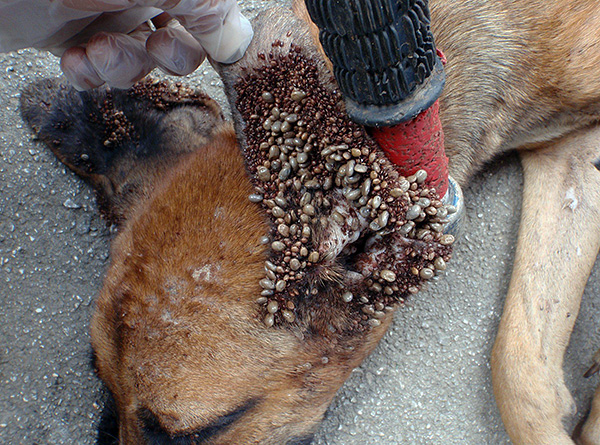
After nature walks, it is paramount to check your body for the presence of ticks in the specified areas. As noted above, you will not feel the bite. The tick will painlessly cut the skin and inject it with a hypostat, topped with teeth. The teeth have a structure similar to fish hooks, so trying to force the tick out of the body by force is pointless and dangerous.
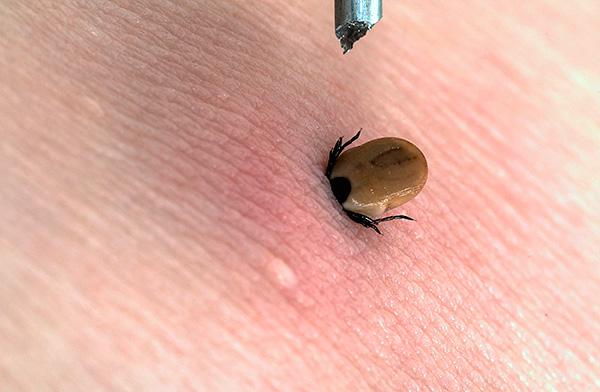
The duration of feeding of the parasite depends on its gender and the stage of its life cycle — it usually ranges from an hour to several days. However, due to a significant increase in the size of the body of the tick, you will notice it much earlier than how it is finally fed.
Epidemiological hazard
Ixodides are biological carriers of human and animal pathogens such as viruses, rickettsia, anaplasma, spirochetes, etc. However, the taiga tick is the most important among them because it is a carrier of spring-summer tick-borne encephalitis - a dangerous viral, transmissible, natural focal disease affecting nervous system.
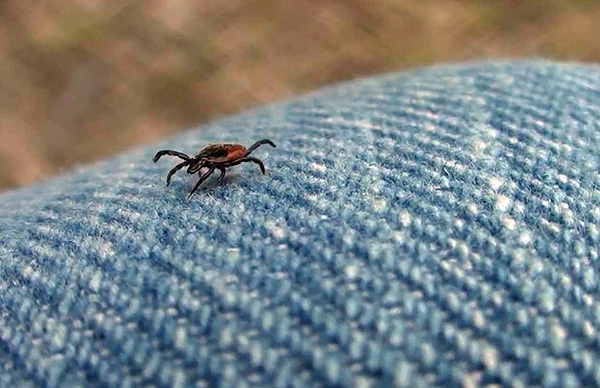
Let's see what all these terms mean in the characteristic of the disease. There is a group of diseases that are called natural focal. This means that some kind of virus or bacterium, or the simplest (not important) is localized in nature in the carrier's body (focus). Reproduction of the pathogen in this natural reservoir does not occur, just the pathogen is preserved in it. Such associations can exist for hundreds of years and do no harm to anyone. However, if a susceptible organism appears in this territory in which the pathogen can develop and multiply, then an epidemic breaks out. As soon as the susceptible organism disappears from the specified territory, the focus of the disease disappears, but the pathogens themselves do not disappear anywhere.
How does pathogens transfer from donor to recipient? With the help of carriers, which are often arthropods. Such diseases include malaria, leishmaniasis, sleeping sickness and others. So, just those diseases that are transmitted to a person through such carriers are called transmissible.
There is no exception and tick-borne encephalitis, the virus which carries the taiga tick.It is believed that the natural reservoir of encephalitis are small rodents. Ticks, along with their blood, get into the body and the virus of this disease. Then, along with saliva, the virus is introduced into the human body, where it begins to multiply. Next, a person gets sick.
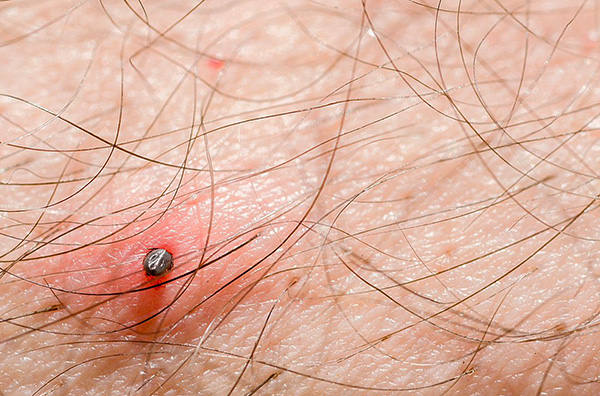
But in the body of the tick the virus does not multiply, just its "viability" is maintained at the required level until the final host is introduced into the body.
It is clear that not every taiga tick is a carrier of encephalitis, however, human contact with this parasite carries a great danger.
On a note
Tick-borne encephalitis is a very dangerous disease, it is characterized by lesion of the brain substance, neurological complications and often leads to death. Methods for the specific treatment of encephalitis have not yet been developed, so prevention is the best defense. Your safety depends on your care.
Diseases carried by the taiga tick
The medical significance of the taiga tick lies in the fact that in addition to encephalitis, it also carries:
- Kemerovo fever. Kemerovo fever is common in Siberia, caused by reoviruses.Natural reservoirs are birds. Initially, the disease may be asymptomatic, in the later stages of the body appear rash in the form of fluid-filled blisters, there are signs of myocarditis, meningoencephalitis. The danger is that in the tick population the virus persists indefinitely;
- Tick-borne borreliosis (Lyme disease) is a disease caused by spirochetes. The incubation period lasts about a month. The first sign of infection is that the site of the bite after extraction of the tick swells and reddens and does not heal. This means that urgent action is needed. If you start the disease, you may experience serious problems with the cardiovascular system, nervous system, skin and joints;
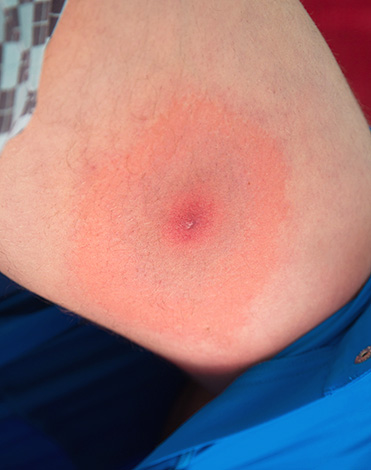
- Tularemia is a bacterial disease that is transmitted to humans not only through tick bites. It is characterized by lesions of the lymphatic system. Carriers of the pathogen are small rodents.
In conclusion, it is worth noting that even with the observance of preventive measures, it is not always possible to avoid contact with the tick. Closed clothing and repellents do not guarantee 100% security.If you live in places that are part of the taiga tick habitat, then vaccination is the best solution.
Interesting video: how a tick bite occurs (macro)
What to do when a tick bite

